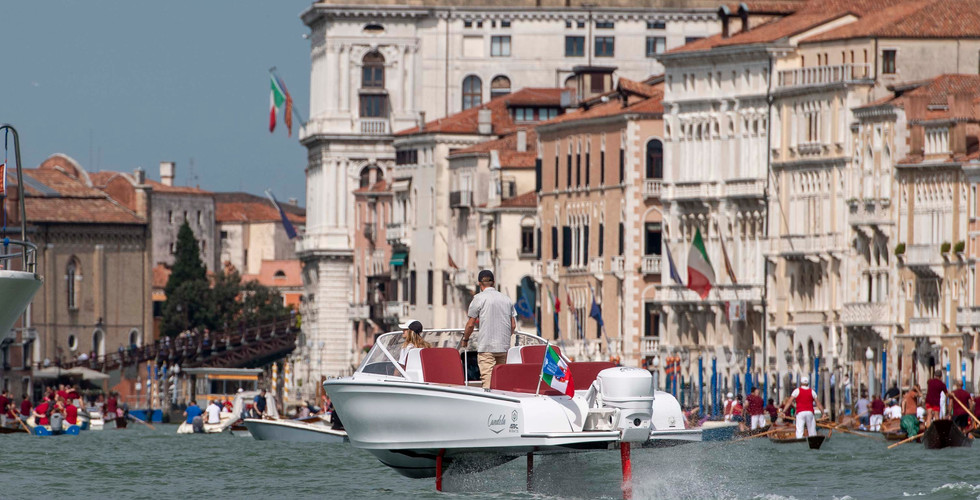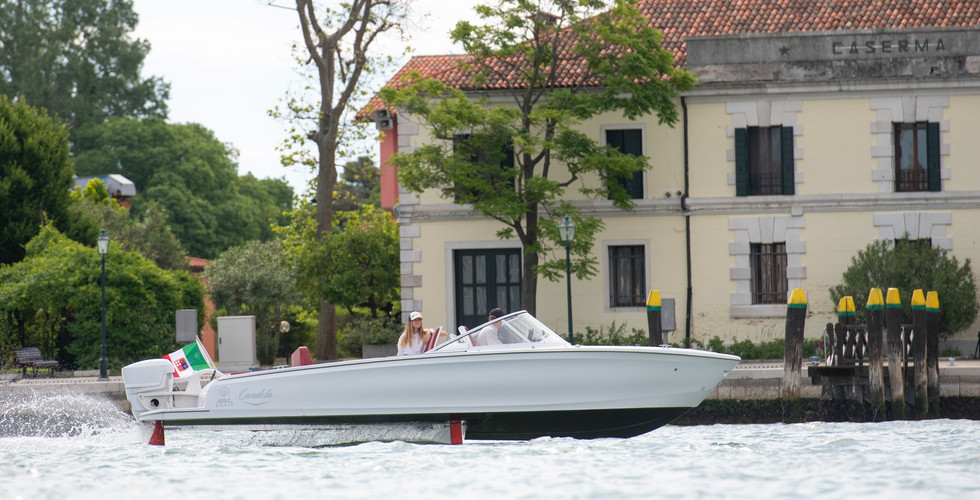Venice is slowly sinking. Massive waves from the city’s speedboats are causing irreparable damage to the iconic buildings. But what if all the taxis, ambulances and commuter ferries that serve as the city's main form of transportation could fly above the water, without making wakes – and be electric?
In the 1950’s gas powered motor boats where introduced to Venice, increasing the speed and efficiency of water transportation. But they also created the problem known to Venetians as Moto Ondoso – wake induced damage – that threatens to erode the foundations of 800-year old Venetian buildings built on wooden pillars which were not designed to withstand the high-energy impact from the swells created by the city’s fleet of diesel-burning speedboats.
Today, with mass tourism and those looking to live a luxury lifestyle the wakes created by motor boats are seen as such a problem, that Gondoliers and activists have repeatedly demonstrated against speedboats by blocking the city’s waterways, and following the reduction in tourism brought on by the ongoing COVID pandemic Venice’s usually dark waterways have turned noticeably clearer because of the absence of motorboat traffic providing further strength to the notion that change is required.
Hailed by the media as the “Savior of Venice”, the Swedish-made Candela is an entirely new kind of craft that brings hope of saving the city’s unique cultural heritage from destruction – whilst making transport around the cities waterways even better and faster.

Flying on computer-aided hydrofoils, the Candela C-7 is the first electric craft with long range at high speed. Using computers and software to fly above the waves, it needs 80% less energy than conventional motorboats – and a welcome side effect is the almost total absence of wake. Causing a less-than 5cm high wake, the silent Candela C-7
can cruise at high speeds for well over 2 hours at a speed of up to 30 knots (55 km/h), far longer than any other electric boat, without causing damage to buildings, canals, or other boats, such as gondolas.
In addition thanks to a recent investment of €24m from Europe’s premier investment company EQT Ventures, Candela now plans to scale its hydrofoil technology to several commercial vessels. The company is developing the 30-passenger shuttle ferry Candela P-30 for the City of Stockholm, a vessel that is very similar to the Vaporettos (water buses) currently used by the Venetians. - A P-30 would not only be faster, but also a more comfortable ride than today’s diesel ferries since it flies above the swells and chop. But the most important aspect is that it will not create any Moto ondoso, says Gustav Hasselskog, the CEO of Candela Technology
Candela P-30 will also be vastly more economical to operate than today's diesel ferries. According to data provided by the Region of Stockholm, the first customer, P-30 will have 40% lower operating costs than Stockholm’s similar-sized diesel vessels.

Simultaneously, Candela is also working on the Candela P-12, which is a 12- person water taxi resembling the classic Venetian taxi boats. The difference, again, is that the foiling P-12 will not create wake and uses considerably less power at high speeds: only about 30 kW, or 40 horsepower, operating at a speed of 20 knots. Traditional taxi boat are often equipped with 250-to 300 hp diesel engines. - The Candela P-12 would be the perfect shuttle boat going from Marco Polo Airport to the city. This particular stretch of water is also pretty rough, with crisscrossing waves that can cause discomfort. Flying above the water surface would mean a much better experience for passengers, says Gustav Hasselskog.
Candela will be showcasing the Candela C-7 the world's first electric hydrofoil boat during the Salone Di Nautico, May 29 to June 6 offering test drives around the wonderful waterways of Venice.













